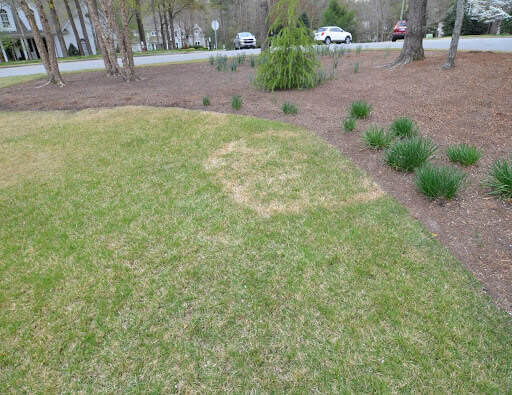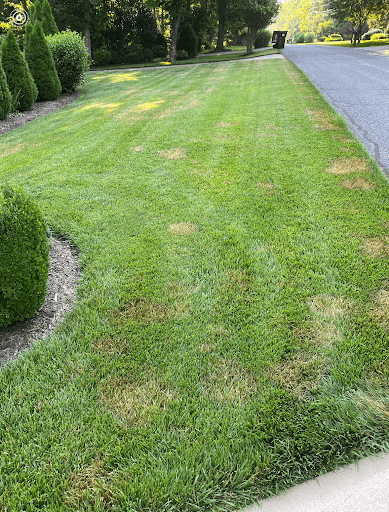Turf diseases can be huge lawn detriments. We have the expert insights you need to overcome any that come your way.
Unsurprisingly, nothing good can come from turf disease. Just like illnesses we experience, these can do damage and cause setbacks for once-healthy grass in major ways. Here’s what you need to know and do to mitigate disease devastation in your yard.

In essence, diseases are always present in our lawns. However, conditions that trigger their development aren’t. When these conditions are present for several or more days, though, they strongly correlate with disease development. They include:

There are over 100 diseases that can develop in NC lawns, but only about 26 of them are annuals. This means you likely won’t encounter most of them for years, or even ever again, after an initial outbreak. Some of the most common diseases include:
Most turfgrass diseases are fungus-based, but some are also caused by different bacteria and viruses. Even with their differences, there are three overall steps for getting them under control.
Applying fungicides preventively in the fall and spring can help prevent the most prevalent warm-weather diseases. This also offers better control and less potential turf damage vs. curative fungicides that deal with already present diseases. However, it can be difficult to apply specific preventive fungicides for non-annual diseases that have never emerged before. As such, diseases can still show up after preventive treatments.
Once you’re alerted to one—often through leaf blade discoloration, lesions and/or fuzzy growths—you’ll likely want an expert diagnosis. Otherwise, you’ll have to do your own research to understand what exactly it could be and what fungicide type/chemical class can work best. This can be especially hard since some diseases are very similar to others or even other lawn conditions, like heat stress.
When a disease is already present, you must use curative fungicides at a regular cadence to deal with it. This creates a couple more considerations:
Most any lawn disease is manageable when you act quickly and efficiently. At Fairway Green, we’re able to offer preventive and curative fungicide applications custom to your lawn’s needs and in quick intervals for maximum effectiveness. Learn more about controlling current and future turf diseases with a free lawn estimate.